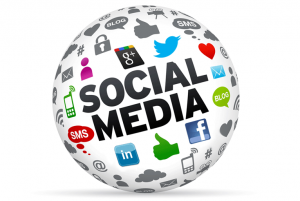A community can be defined as a group of people who share similar interests, beliefs, and goals. Communities allow people to “… exchange ideas and information, [and] to learn with and from each other” (Major, 2015, p. 227). In today’s society, we have access to digital forms of communication, making our ability to share ideas easier than before. Instead of connecting with others in person and in real-time, we can use social networking to connect with others at any time, often making our interactions asynchronous (Major, 2015, p. 228). One of the advantages of using social media is the ability to communicate and connect with people from all over the world. This medium can connect a community of learners, broadening our resources and creating a means to converse with peers and others who share our similar interests.

Learners and educators can use social networking to create groups where individuals can engage in discussions and share their knowledge. It creates opportunities for learners to connect with peers and have discussions online. With today’s technology, we can communicate through text, group chats, email, and video/phone calls. With regards to education, this opens the door for communication to occur if you are unable to meet face-to-face. With social media, we are presented with the opportunity to share resources and information with others over platforms like Twitter and Facebook, or other social networking sites. We also have the opportunity to follow people who share similar likes and interests. It also presents us new opportunities to learn and connect with people from all over the world, who we may not have had a chance to without this platform.

Creating a Community in an Online Course:
It can be difficult to create a community of learners in an online course, especially if it is during a short period of time. I think to develop a community in this type of setting the learners need to be actively involved and engaged with the other participants in the course. Part of what makes a community to me is getting to know the people you are working/learning with. Social media helps foster the communication between classmates in an online course, especially if it is being used effectively. If learners are actively involved in the communication process, I think it can be very effective in creating a community of learners! The first strategy that is proposed by Todd Conaway, instructional designer is, presenting a social presence. The development of a social presence, “requires being there and being seen as being there, and it is achieved through communication with others” (Major, 2015, p. 247). The second strategy he proposed was, to create opportunities for sharing information and expertise, “providing opportunities for students to share information is a useful tool in helping to develop a community” (Major, 2015, p. 247). When learners are given these opportunities, it opens the door for connections to form and develop in an online course. What I have appreciated about the online course I am taking now, is there are many new platforms to engage with my classmates. Social media presents so many possibilities to share knowledge and resources with one another, and provide us with the means to communicate and engage in discussions when we are unable to have those conversations in person. I think social media is a vital resource to have, especially when it comes to online learning. Access to resources and professionals in our field is more accessible than it has been before.
References:
Major, C. H. (2015). Teaching online: A guide to theory, research, and practice. Baltimore, Maryland: Johns Hopkins University Press.
Feature image retrieved from: https://medium.com/@braydenfox/social-media-and-education-using-social-media-for-better-academic-results-804b7a41a825
Image 1 retrieved from: https://lichtenheldt.de/en/lichtenheldt-presents-itself-in-the-social-networks/
Image 2 retrieved from: https://www.3ddigital.com/web-design/5-things-every-business-website-needs/attachment/1-1/



